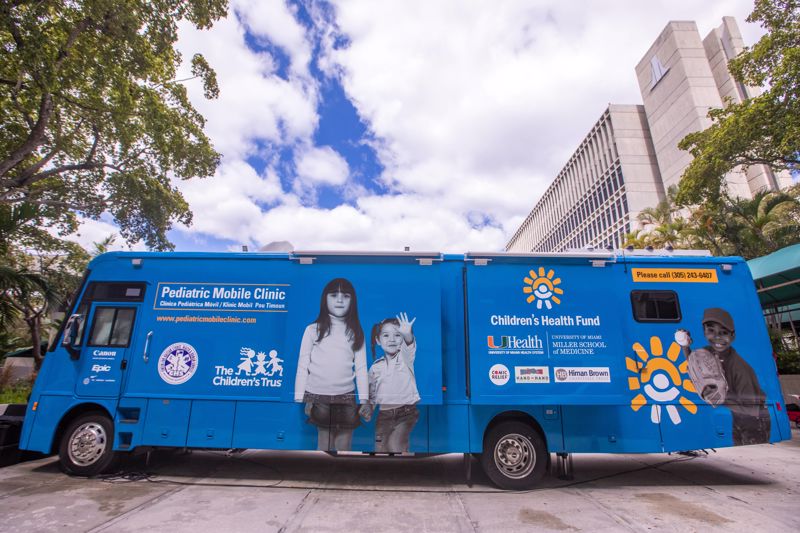The COVID-19 pandemic has made 2020 nothing short of a rollercoaster ride. From closing states down and opening them back up with restrictions and encouraged social distancing strategies to increased testing measures, different areas of the country are experiencing the direct and indirect impact of the virus at varying levels.
The current progression of the first wave makes it very difficult to predict the future, especially when it comes to our children. Will they head back to school in the fall, or will parents be expected to teach remotely for another quarter, semester or an entire year? If students will in fact make it back into the schools, it’s important for parents to ensure their children are up to date with vaccinations.
But how can kids go in for their routine checkups with so many social distancing requirements keeping care facilities from seeing patients at a normal rate? Telemedicine can solve this problem, especially with an expected increase for checkups and patient volume.
To better understand the current landscape of increased care needs and pediatric telemedicine potential, we spoke with Lisa Gwynn, DO, MBA, FAAP, CPE, associate professor Clinical Pediatrics and Public Health Sciences at the University of Miami Miller School of Medicine and Program Director of the Pediatric Mobile Clinic & School Health.
Making use of pediatric telemedicine during unprecedented times
Before COVID-19, Dr. Gwynn managed a staff of 13 nurses among 9 different schools, providing care during the school day. Once the pandemic started to make a major impact and close down educational facilities, her roster split into 11 nurses who were assigned to take on COVID-19 testing within the community. This included two of the care providers working out of the mobile clinic to administer and manage virtual visits for patients. This resource has allowed Dr. Gwynn and her staff to see sick kids through the AGNES telemedicine platform and perform vaccine drives in an effort to keep children as up to date with their vaccines in the event of returning to physical school buildings when summer comes to a close.
“We are using it out in the community for vaccine drives and well visits because kids are falling behind on their vaccinations,” Dr. Gwynn shared. “Instead of having a provider out there in the field, the provider is talking to them through the AGNES telemedicine platform to make sure they don’t have any symptoms and getting their questions answered about vaccinations so they can place the order. Our mobile capabilities have allowed us to fully utilize telehealth technology such as AGNES and connected medical devices, when we have limited access to providers.”
 The mobile unit allows Dr. Gwynn and staff to utilize all telemedicine technologies.
The mobile unit allows Dr. Gwynn and staff to utilize all telemedicine technologies.The mobile model workflow
Currently, Dr. Gwynn is managing one mobile unit, but has plans to refurbish an old unit to extend their reach among the community of Miami-Dade County. The mobile model workflow is designed to function as much like a doctor’s office as possible so that patients – this being mostly children – can feel more comfortable with this “new normal” of care delivery.
“We have a line for them to call to schedule an appointment,” she explained. “From there, they’ll ask where the bus will be and will schedule based on when the mobile unit comes closest to their neighborhood. When the patient shows up to the mobile clinic at their appointment, they are taken into the bus and connected with the provider for a virtual visit using the AGNES telemedicine platform. The provider then conducts the interview and decides which vaccines are needed.”
The future
Because of the unpredictability of the virus, Dr. Gwynn finds it quite difficult to predict the future for the children in the community. What she does know, however, is that if schools in fact open up in the fall, that students must be vaccinated if they want to return to the classroom.
“The surgeon general for the state of Florida is not going to allow vaccine exemptions or extensions,” she said. “Kids have to be up to date with their vaccinations.”
Dr. Gwynn and her use of pediatric telemedicine within a mobile clinic has enabled her to keep children ahead on immunizations to prevent other illnesses that could occur during the pandemic and make matters far worse for all.
“The telehealth efforts towards vaccinations, which is kind of a unique, new way of using the technology, has been game-changing for us all,” she shared.
As social distancing continues to be a high priority across the country, the need for more versatility in care delivery is a must. Learn more about how AMD Global Telemedicine can help you and your care providers continue keeping your community healthy during the pandemic and beyond.






